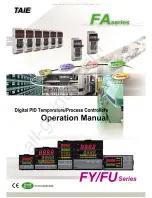
©2007 by ACCEL
INST275/300
1
275+ & 300+ STREET / STRIP
DIGITAL MULTI-STRIKE CD IGNITION CONTROLLER
GENERAL INFORMATION
The features of the 275+ and 300+ Ignitions are the same,
with one exception: the 300+ includes a single stage RPM
limiter. You can set various RPM limits using switches that
are accessible through the end plate. See page 4 of this
instruction book for more information about the rev
limiting features of the 300+.
Battery
The 275+ and 300+ Ignition Controls operate on any
n e ga t ive ground, 12 volt electrical system with a distributor.
It will also work with 16 volt batteries and can withstand a
momentary spike of 24 volts in case of jump starts. This
system delivers full voltage with a supply of 10-18 volts,
and operates with a supply voltage as low as 8 volts.
If your application does not use an alternator, allow at least
15 amp/hour for every half hour of operation. If you crank
the engine with the same battery or other accessories,
such as an electric fuel or water pump, increase the
amp/hour rating.
Coils
For optimum performance with your 275+ or 300+ Ignition
Controls, we recommend ACCEL P/N 140019 Coil, as well
as most stock coils or aftermarket coils designed as
stock replacements or CD-type coils.
NOTE: Do not use ACCEL’s Drag Race Coil P/N 140010.
Tachometers
The green wire on the 275+ and 300+ Ignition Controls
provides a trigger signal for tachometers, shift lights, or
other add-on RPM activated devices. This wire produces a
12 volts square wave signal with a 20% duty cycle.
Some vehicles with factory tachometers may require a tach
adapter to work with the 275+ and 300+ Ignition Controls. If
your GM vehicle uses an inline filter, it may cause the tach
to drop to zero on acceleration. If this occurs, bypass the
filter. For more information on tachometers, see page 3.
Spark Plugs
Using the correct spark plug and heat range is important
for optimum performance. Because there are so many
variables to consider, we suggest starting with your engine
manufacturer’s spark plug recommendation. From there,
you can experiment with small changes in plug gap
and heat range to obtain the best performance from
your engine.
Foreign Vehicles
Because of modern fuel injection systems, some foreign
vehicles may require a tachometer/fuel injection adapter to
work with the 275+ or 300+ Ignition Controls.
NOTE: Do not install the 275+ or 300+ Ignition Controls
in any vehicle that is originally equipped with a
CD ignition control.
Spark Plug Wires
High quality, spiral wound wire and proper routing are
essential to the operation of the 275+ and 300+ Ignition
Controls. This type of wire provides a good path for
the spark to follow while minimizing electromagnetic
interference (EMI).
NOTE: Do not use solid core spark plug wires with the
275+ or 300+ Ignition Controls.
Routing
Wires should be routed away from sharp edges, moving
objects, and heat sources. Wires that are next to each other
in the engine’s firing order should be separated. For
example, in a Chevy V8 with a firing order of 1- 8 - 4 - 3 - 6 - 5 - 7-2,
the #5 and #7 cylinders are positioned next to each other
on the engine as well as in the firing order. Voltage from
the #5 wire could jump to the #7 wire. This could cause
detonation and engine damage.
For added protection against cross-fire, ACCEL offers
PRO SLEEVE insulated sleeving. PRO SLEEVE is a glass
woven, silicone coated protective sleeve that slides over
your plug wires. It also helps reduce damage from heat
and sharp objects.
MISCELLANEOUS INFORMATION
Sealing
Do not attempt to seal the 275+ or 300+ Ignition Controls.
All of the circuits of a 275+ and 300+ receive a conformal
coating of sealant that protects the electronics from
moisture. Sealing the 275+ and 300+ will not allow any
moisture that seeps in through the grommets to drain and
may result in corrosion.
Welding
To avoid any damage to the 275+ or 300+ Ignition Controls
when welding on the vehicle, disconnect both the 4-pin flat
and 4-pin square connectors. It is also a good idea to
disconnect the tachometer ground wire as well.
Distributor Cap and Rotor
We recommend installing a new distributor cap and rotor
when installing the 275+ or 300+ Ignition Controls. Be sure
the cap is clean inside and out, especially the terminals and
rotor tip. On vehicles with smaller caps, it is possible for
the air inside the cap to become electrically charged
causing crossfire which can result in misfire. You can
prevent this by drilling a couple of vent holes in the cap.
INSTALLATION INSTRUCTIONS

























